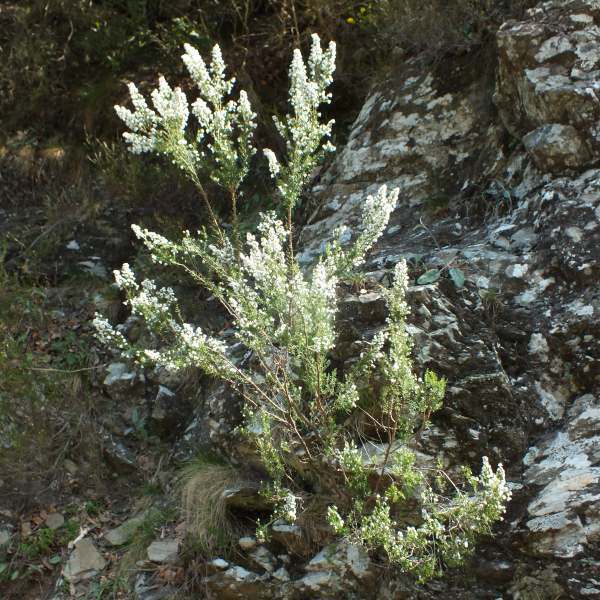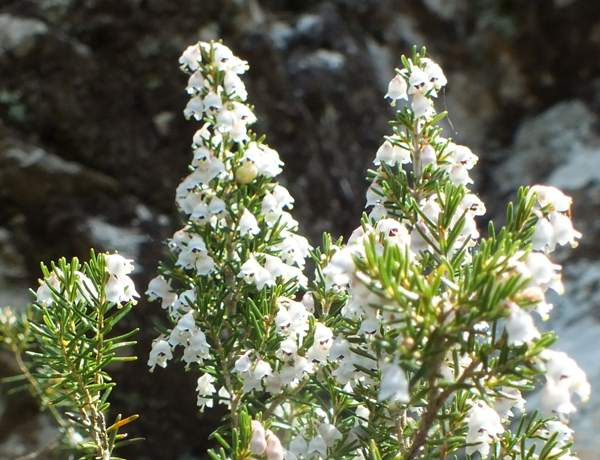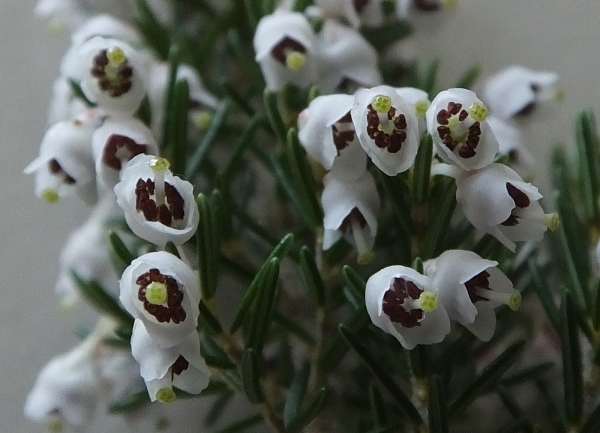Erica arborea -
Tree
Heath
Phylum: Magnoliophyta - Class: Equisetopsida - Order: Ericales - Family: Ericaceae

Erica arborea is an upright evergreen shrub or small tree capable of growing to a height of 6m or more; however, in Europe most plants are less than 3m in height.
Description
Tree Heath has dark green needle-like leaves and numerous small honey-scented white (occasionally pink or pale purple) flowers with reddish-brown anthers. With its tiny bell-like fragrant flowers just 3mm long and borne in pyramidal panicles, this is a distinctive member of the Ericaceae family. Tree Heath is much taller than most other heather and heath species, and its stature and profuse flowering habit make it difficult to overlook.

Distribution
Erica arborea is found in Mediterranean Europe, northern Africa and western parts of Asia. Because of its stature and dense flowering nature, this plant has been cultivated and varieties can be seen in parks and gardens throughout the temperate world.
Habitat
Almost invariably, inn the wild Tree Heath grows from cracks in rocks in areas of acidic soil. Occurring almost down to sea level, this plant is rarely seen in the wild at altitudes above about 600m.

The flowers of Erica arborea are highly perfumed and attract honey-bees and other insects.
Blooming times
Erica arborea flowers from March to May.
Etymology
Erica, the genus name, is Latin and simply means heath. The specific epithet arborea means tree-like.
The Tree Heath plants shown on this page were photographed in southern France during April.
Please Help Us: If you have found this information interesting and useful, please consider helping to keep First Nature online by making a small donation towards the web hosting and internet costs.
Any donations over and above the essential running costs will help support the conservation work of Plantlife, the Rivers Trust and charitable botanic gardens - as do author royalties and publisher proceeds from books by Pat and Sue.

